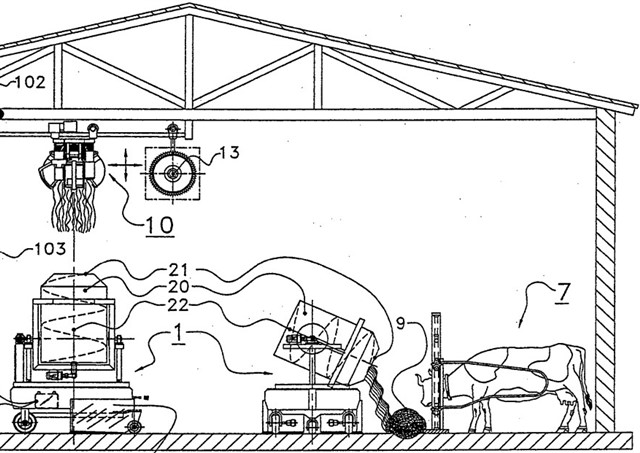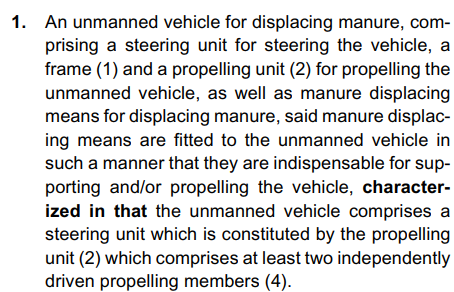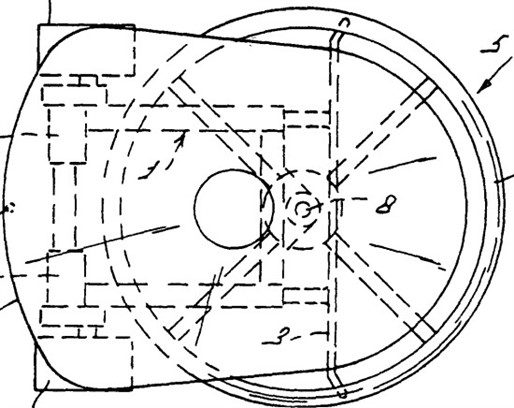How did the Vector and Juno came along?
How did the Vector and Juno came along?
 Actially it all goes back to 1999 when the first ideas of the Discovery autonomous manure scraper came up. The navigation and steering principles of the Vector and Juno are the same as the Discovery: steering by driving left and right wheels at different speed and navigation by means of ultrasone sensor, gyroscope and odometry (counting the number of wheel turns). The Juno was the first autonomous feed push vehicle in the market. First patent filed 2006 and introduction in the market in 2008. The Vector is basicly a Juno with a feed mixer on top. The first idea was to use a concrete mixing type of mixer. However, mixing tests gave a big saucage of feed. After changing the ''concrete mixer'' by a standard mixer with vertical screw, the Vector was born. Introduced on the Agritechnice in 2012.
Actially it all goes back to 1999 when the first ideas of the Discovery autonomous manure scraper came up. The navigation and steering principles of the Vector and Juno are the same as the Discovery: steering by driving left and right wheels at different speed and navigation by means of ultrasone sensor, gyroscope and odometry (counting the number of wheel turns). The Juno was the first autonomous feed push vehicle in the market. First patent filed 2006 and introduction in the market in 2008. The Vector is basicly a Juno with a feed mixer on top. The first idea was to use a concrete mixing type of mixer. However, mixing tests gave a big saucage of feed. After changing the ''concrete mixer'' by a standard mixer with vertical screw, the Vector was born. Introduced on the Agritechnice in 2012.
Do you know how did it works back then with patents? was it really different?
I am working with Lely's patents since 1999. Lely's products are all protected by several patents which cover different aspects of the machine. For example the 99patent of the Discovey covers the fact that a manure scraper only has 2 wheels and a scraper. If competitors wanted to construct a similar device they needed at least 3 wheels and a steering wheel. This made their product more expensive. Another nice example of the effect of patent protectiom is the patent of the feed height sensor of the Vector (2012). This sensor makes it possible that the Vector is only feeding when necessary. Competitor's feeding robots need to feed a fixed amount at fixed times and can not automatically taken into account changes of number of animals or changes in feed/grazing. The Vector can do this automatically.


I am working with Lely's patents since 1999. Lely's products are all protected by several patents which cover different aspects of the machine. For example the 99patent of the Discovey covers the fact that a manure scraper only has 2 wheels and a scraper. If competitors wanted to construct a similar device they needed at least 3 wheels and a steering wheel. This made their product more expensive. Another nice example of the effect of patent protectiom is the patent of the feed height sensor of the Vector (2012). This sensor makes it possible that the Vector is only feeding when necessary. Competitor's feeding robots need to feed a fixed amount at fixed times and can not automatically taken into account changes of number of animals or changes in feed/grazing. The Vector can do this automatically.


Was there ever a patent that had to be removed due to issues?
I would also be interested in this
The field of agriculture is packed with patents. So yes, it is always a search to find patents which might block our invention and to find ways to go around them. Also sometimes legally fighting to destroy these patents.